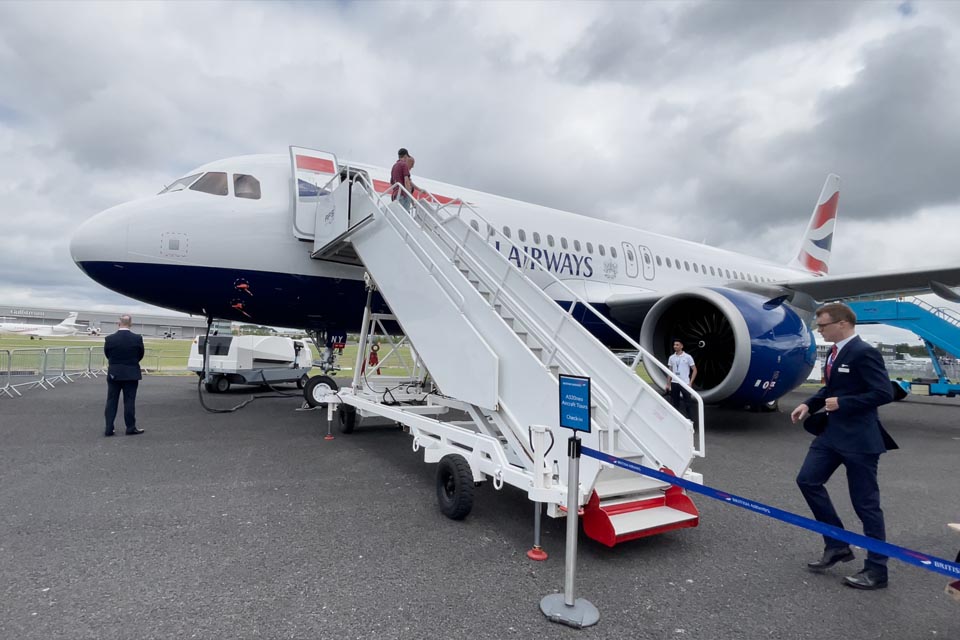Aviation
British Airways Appeal on Controversial ‘Fire and Rehire’ Policy Dismissed

British Airways (BA) has faced a significant setback in its legal battle over its controversial ‘fire and rehire’ strategy implemented during the COVID-19 pandemic.
The airline’s appeal against an Employment Tribunal ruling has been dismissed, upholding the Tribunal’s decision that the Equality Act 2010 extends to cases of ‘indirect associative discrimination.’
The case was brought by 38 former cabin crew members who challenged BA’s practice of dismissing employees before re-employing them under new and often less favorable terms. The Employment Tribunal’s ruling from December 2022 had established that the Equality Act 2010 should be interpreted to protect against indirect associative discrimination, including in cases of sex and race discrimination.
BA Launches Fully-Funded Pilot Training Program for 60 Applicants:Click here
In a recent two-day hearing, British Airways argued against this interpretation, seeking to overturn the Tribunal’s decision. Key testimonies included those from Women and Equalities Minister Bridget Phillipson and the Human Rights Commission, who supported the view that the Equality Act’s protections should apply broadly, including to both male and female home carers.
Court documents released yesterday confirm that the Employment Appeal Tribunal (EAT) has rejected BA’s appeal. This ruling reinforces the application of Section 19A of the Equality Act 2010, which was introduced to align UK law with established EU protections against indirect discrimination by association. This section eliminates the need for claimants to rely on EU law and supports the Tribunal’s interpretation of the Equality Act.
A British Airways spokesperson commented, “This appeal was about seeking the Employment Appeal Tribunal’s direction on a narrow and technical area of law. We note the decision of the Tribunal and will carefully review its judgment before considering next steps.
Is It Worth It to Choose British Airways Premium Economy?:Click here
The ongoing legal proceedings involve a substantial claim for damages amounting to up to £515 million from former Heathrow-based cabin crew. These employees were among the 12,000 BA staff affected by the ‘fire and rehire’ strategy in 2020, british airways cadet which included changes to their employment contracts, reduced pay, and altered terms and conditions.
Notably, the airline also terminated its crew ‘Scheduling Agreement,’ which had previously guaranteed time off between flights, and introduced new standby requirements.

Aviation
China Eastern Receives Its Ninth C919 Aircraft, Marking a New Milestone

China Eastern Airlines (CEA) has reached a significant milestone with the delivery of its ninth COMAC C919 aircraft, continuing its lead as the launch customer for China’s domestic narrow-body airliner.
On Thursday, the airline received the latest addition to its fleet, registered as B-657T, marking another step in China’s ambitious efforts to establish itself as a key player in the global aerospace market.
Virgin Australia Launches Black Friday Sale on Flights Worldwide
This delivery is part of a major achievement for COMAC (Commercial Aircraft Corporation of China), which has now delivered a total of 10 comac c919 in 2024 alone, a remarkable increase from just three jets delivered by the end of 2023.
The C919 program represents China’s entry into the competitive market for commercial aircraft, aiming to rival the dominance of manufacturers like Airbus and Boeing in the narrow-body sector.
These 6 Airlines Are Giving You Free Wi-Fi on Your 2025 Flights
One standout feature of the c919 is its innovative in-flight technology, particularly its Wi-Fi system. Developed by the China Electronics Technology Group Corporation (CETC), this system allows passengers to connect to the “CEAIR-WIFI” wireless hotspot, providing seamless access to in-flight entertainment.
Through the website www.muflyer.com, travelers can enjoy a range of features including “Air Cinema” and “Air Games,” which enhance the flying experience.
Looking ahead, COMAC’s ambitions are not limited to narrow-body aircraft. At the 15th China International Aviation and Aerospace Exhibition in Zhuhai, c919 aircraft price made waves with the announcement of over 100 new aircraft orders.
A significant highlight was a high-profile agreement with Air China for the development of the C929, a widebody aircraft set to compete c919 vs a320 and c919 vs 737 with these models.
-

 Aviation2 months ago
Aviation2 months agoMicrosoft Flight Simulator Raises $3 Million to Bring Back the An-225 Mriya
-

 Airlines2 months ago
Airlines2 months agoQatar Citizens Can Travel to the United States Without a Visa
-

 Aviation2 months ago
Aviation2 months agoQatar Airways bans these new Electronic Devices on plane
-

 Defence2 months ago
Defence2 months agoWhich Country Has the Largest Fleet of Fighter Aircraft?
-

 Airlines1 week ago
Airlines1 week agoDAMAC Air: Dubai’s New Luxury Airline Offers Free Flights for Registration
-

 Airport2 months ago
Airport2 months agoWestern Sydney Airport Welcomes Its First Plane After 6 Years of construction
-

 Airlines7 days ago
Airlines7 days agoAir India to Launch aircraft maintenance training institute in Bengaluru
-

 Aviation2 months ago
Aviation2 months agoDid you know ? Once Boeing 747 carried 1088 passenger in 1991








